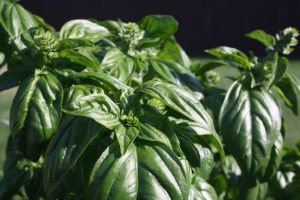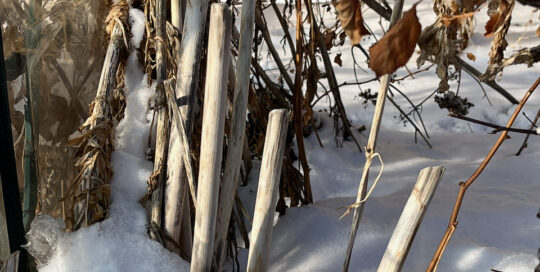Wintering Plants Until Growing Next Season
Views: 1034

’Tis the season to either bring in containers of plants to winter over or dump and clean them out for the season. What you do depends on the type of plant, whether it is an annual or perennial (or even worth saving even if it is a tender perennial), and whether you have a place to keep them for the winter. To keep your plants healthy until next season, as well as to prevent potential disease and bug issues, follow a few simple steps during your fall transition.
Cleaning and dumping
For pots holding your annual flowers or vegetables, it’s easiest to dump out the soil and spent plants in a garden area, if at all possible. You can compost the plants as long as they were healthy throughout the season. If they showed signs of disease, or you had particular problems with pests, it’s best to bag them and throw them in the garbage (or burn them). To be ready for the spring, wash the containers with a hot, soapy water and rinse them in a mild bleach solution. They will be ready to plant as soon as the mood strikes and weather allows next year.
Bringing summer indoors
There are some tender plants, such as rosemary or basil, that can survive the winter indoors if provided with adequate environmental conditions to withstand the darker months. If you have a plant that you regularly move indoors during the winter, now is a good time to repot it, if necessary. This is especially important if you’ve had any pest issues since bringing them inside to the perfect warm climate can exacerbate the problems.
Use a well-cleaned and larger container for your plant’s new home, and always use new soil. Knock the plant out of the original container, and if there have been disease or pest problems careful pull away more of the soil to minimize the amount of old soil you’re using. Place in the new container, add the fresh soil, and water well.
Since so many of the tender perennials we bring in during the winter come from the Mediterranean or semi-tropical areas, light is the biggest factor to keep them happy during the dark winter months. Place them in the sunniest window possible in the house, or in heated (even if it’s not at a standard 68 to 70 degrees) sun room. They can withstand a little cold, as long as they’re well above freezing, in order to receive more light. Water when you press your finger into the soil and it’s dry roughly 1/2 inch deep because overwatering is actually one of the fastest ways to kill your indoor plants.
Wintering over geraniums
There are some plants that can survive the winter if you protect them indoors, although they will not remain beautiful in the process. Geraniums can last for years when you store them in a root cellar, basement, or heated garage for the winter months. Cut them back and water minimally. Check the moisture level of the soil throughout the winter, but be judicious since the plants are not actively growing. If there is too much moisture, you will have to contend with mold.
Bring in the tender bulbs
Gladiolus, calla lilies, begonias, and dahlias are summer time favorites, but they will not typically survive the winter if left in the ground. For the most part, you can dig the corms or tubers, brush off extraneous soil, and allow them to cure for a couple of weeks in a well-ventilated area out of the direct sunlight. Inspect them before you pack them away for the winter and, if disease is an issue in your area, treat them with a fungicide. Store them in boxes of peat moss or newspaper in a cool (around 35-40 degrees F) area.
Be proactive at this time of the year when you are either cleaning out containers or storing your plants for the winter. If you are vigilant now concerning pests, you won’t have problems later.
Meet Amy Grisak
Amy is a freelance author and photographer in Great Falls, MT who specializes in gardening, foods, and sustainable agriculture. She provides information on every kind…
Amy's Recent Posts

This Little Piggy is a Problem: Dealing with Feral Hogs








